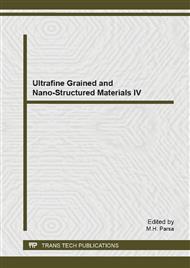p.772
p.778
p.784
p.790
p.795
p.803
p.808
p.813
p.818
The Phonon Confinement Effect on the Impurity States in Cylindrical Nanowire with a Finite Confining Potential in Presence of Electric and Magnetic Fields
Abstract:
In the framework of effective mass approximation, the LandauPekar variational procedure is adopted to study the ground-state binding energy of a hydrogenic impurity in a semiconductor nanowire with finite confining potential subjected to both external fields (electric and magnetic) and electronpolar optical phonon interaction taking into account the phonon confinement effect. The results for the binding energy as well as polaronic correction are obtained as a function of the wire radius, impurity position and applied fields. Calculated results reveal that the values of the polaronic shifts of impurity binding energy can be quite different for cases with finite and infinite confining potentials.
Info:
Periodical:
Pages:
795-799
Citation:
Online since:
November 2013
Keywords:
Price:
Сopyright:
© 2014 Trans Tech Publications Ltd. All Rights Reserved
Share:
Citation:


